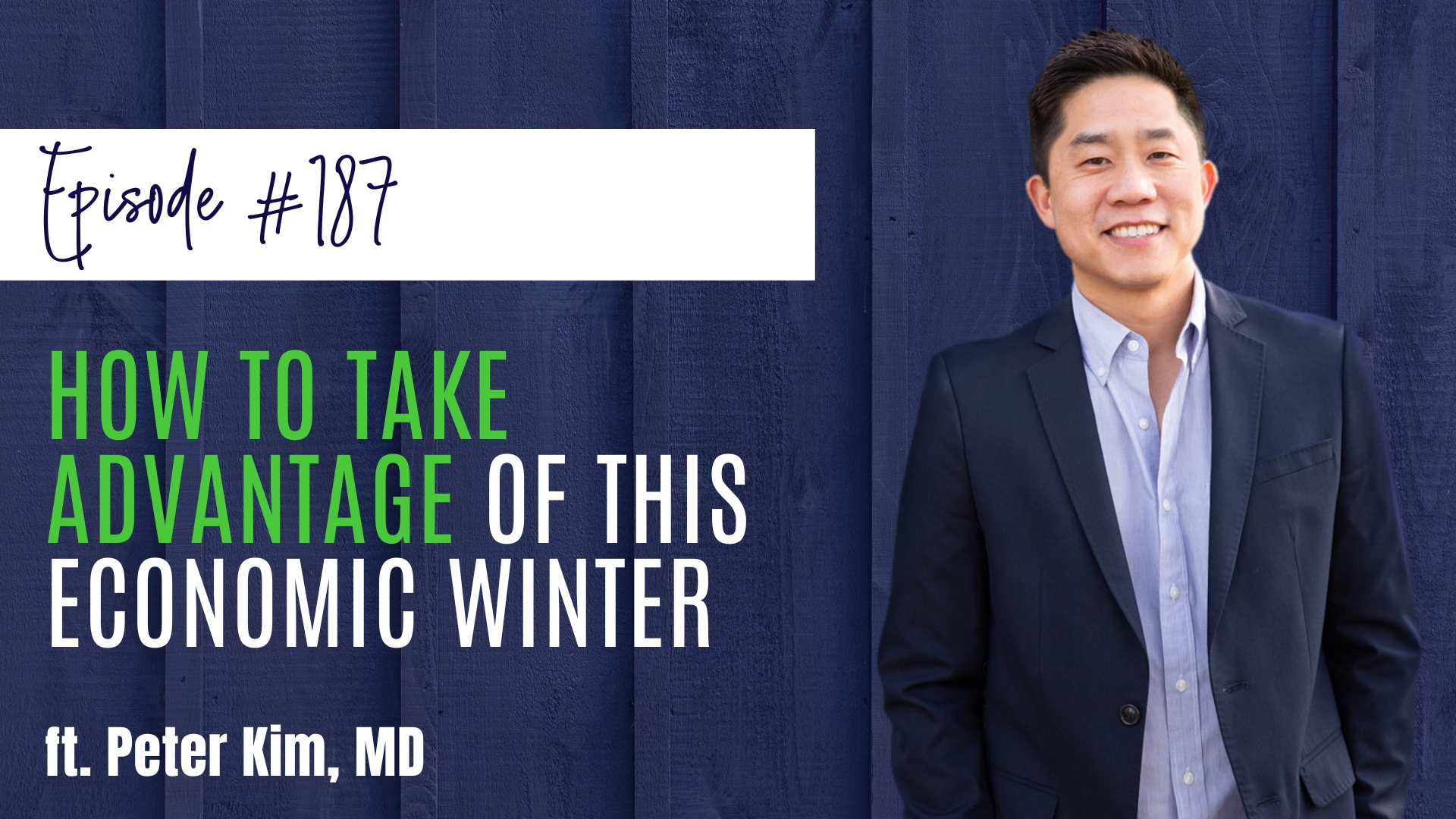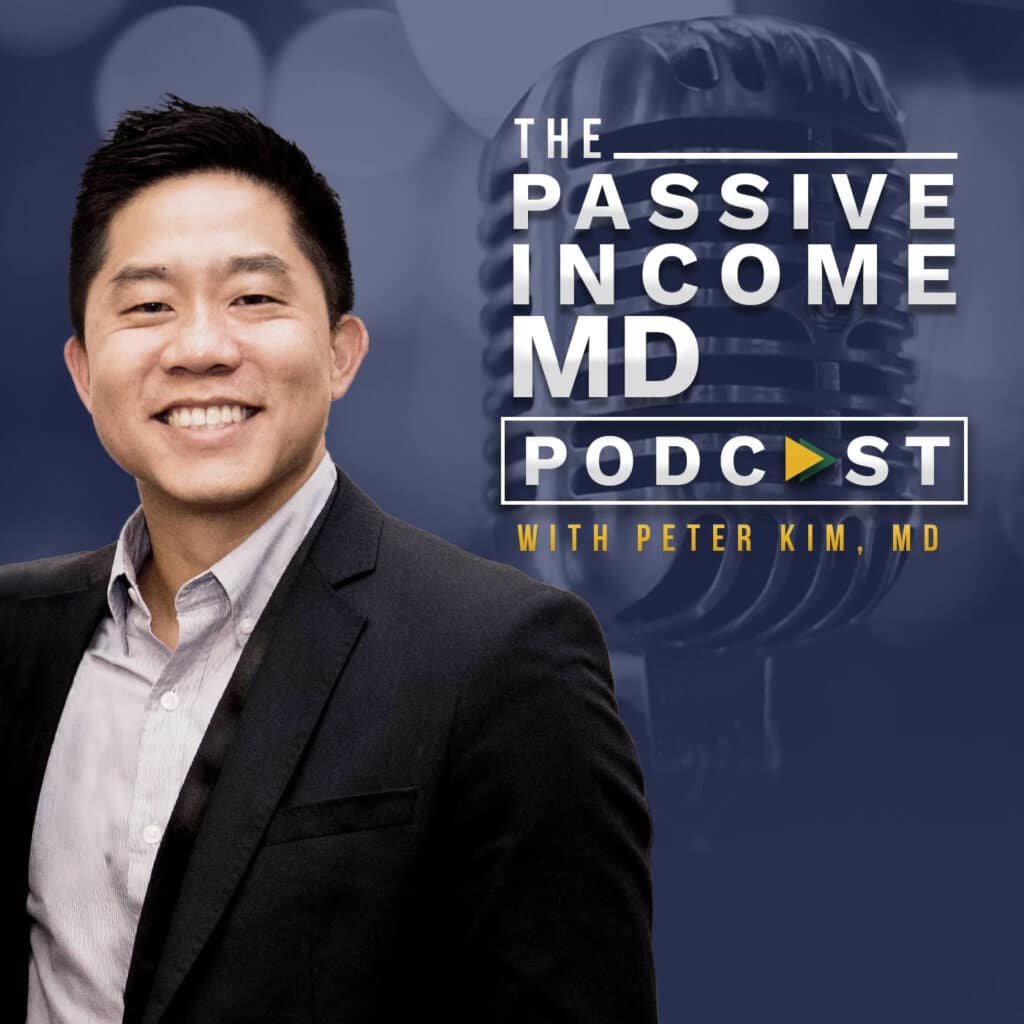
#187 How to Take Advantage of This Economic Winter ft. Peter Kim, MD
In this episode, Dr. Peter Kim dives into the four seasons of the economic cycle with valuable insights on how to strategically position yourself to seize opportunities, even during challenging times. Discover how to thrive during downturns to achieve success in all cycles.
Are you looking for a community to encourage you as you begin, or want to accelerate your business to the next level? Then join thousands of physicians who share the same journey of creating their ideal lives through multiple streams of income by joining us in our Facebook communities such as Passive Income Docs and Passive Income MD.
Eckard Enterprises brings this episode to you.
 Eckard Enterprises, LLC, is a family-owned and operated alternative investment and asset management firm, specializing in mineral rights and the U.S. energy industry. Eckard believes that owning tangible assets is one of the safest, long-term investment strategies available in today’s investment climate.
Eckard Enterprises, LLC, is a family-owned and operated alternative investment and asset management firm, specializing in mineral rights and the U.S. energy industry. Eckard believes that owning tangible assets is one of the safest, long-term investment strategies available in today’s investment climate.
Episode Highlights
Now, let’s look at what we discussed in this episode:
- Life is About Patterns
- The 4 Seasons of the Economic Cycle
- What Season We Are in Right Now
- Prepare For What’s Ahead
- How to Thrive and Not Just Survive
Here’s a breakdown of how this episode unfolds.
Episode Breakdown
Life is About Patterns
Peter opens by expressing that life is a series of cycles and patterns, as it is the same with economic cycles. He emphasizes the importance of recognizing the current economic season in order to make informed decisions and prepare for the future.
By highlighting the lessons learned from repeated patterns, he stresses the need to adapt and plan according to the prevailing economic conditions.
“Life is about patterns. It’s about cycles. We know that in our own lives. We see that in ourselves, in our kids, and in things repeating over time.” — Peter Kim, MD.
The 4 Seasons of the Economic Cycle
Dr. Peter continues by explaining the economic cycle using the analogy of the four seasons. He describes spring as a time of recovery and optimism, with increased job opportunities and a more relaxed monetary policy. Summer represents a period of growth and enjoyment, while autumn is characterized by reaping the rewards but with signs of a slowdown. Winter is depicted as a challenging time with falling asset prices, credit tightening, and economic downturns.
He shares that during winter seasons, there’s a ton of fear and uncertainty leading people to panic or act out of anger.
“In the winter season, it seems like everything is going wrong. Prices fall in terms of assets. Stocks tend to fall. Housing prices fall. And credit tightens, people can’t get lending. People who bought at the peak are now having major issues. You’re seeing things collapse in terms of businesses.” — Peter Kim, MD.
What Season We Are in Right Now
Peter analyzes the current state of the economic cycle, suggesting that we are in the early stages of winter. This is characterized by falling asset values, increased volatility, and a tightening of monetary policy.
He believes that the economy has not yet reached the worst point, and predicts that a recession is still to come, based on historical patterns. Dr. Kim also mentions the impact of inflation and the challenges faced by property owners with high levels of debt.
“People are fearful, people don’t know what to expect, the naysayers are coming out, the ones who have been talking about the economy is going to collapse, they’re there. Their voices tend to get stronger and they seem to know what they’re talking about, even though they’ve been saying it for years and years and years.” — Peter Kim, MD.
Prepare For What’s Ahead
Dr. Kim offers two ways to approach the winter season or economic downturns. The first is to react with fear and view losses as a sign that investing doesn’t work, while the second approach involves recognizing that economic cycles have ups and downs, presenting opportunities for growth and learning.
He emphasizes the potential for uncovering opportunities during challenging times and highlights examples of successful businesses that were established during periods of economic depression.
“Many of the most resilient Fortune 500 companies were actually built during times of depression. Companies like FedEx, UPS, Walt Disney, Costco… Microsoft. They figured out if they could do well in a down period, in a good period they’re ready to reap, they’re ready when everything else has fallen by the wayside.” — Peter Kim, MD.
How to Thrive and Not Just Survive
Peter concludes by encouraging everyone to not only survive but thrive in the upcoming downturns by continuing to educate themselves, working on their mindset, and surrounding themselves with people who see opportunities for growth.
He emphasizes the potential for asymmetric risk-reward situations during economic contractions, where the downside risk is low, but the upside potential is significant. He challenges everyone to find like-minded individuals and stay strong during this period, expressing confidence that being active and proactive will lead to success in the end.
“My challenge to you is to find other people who are like-minded. Make sure you stay strong during this period, let’s figure this thing out together, and I know in the end, we’ll all be very happy that we remained active and made things happen.” — Peter Kim, MD.




